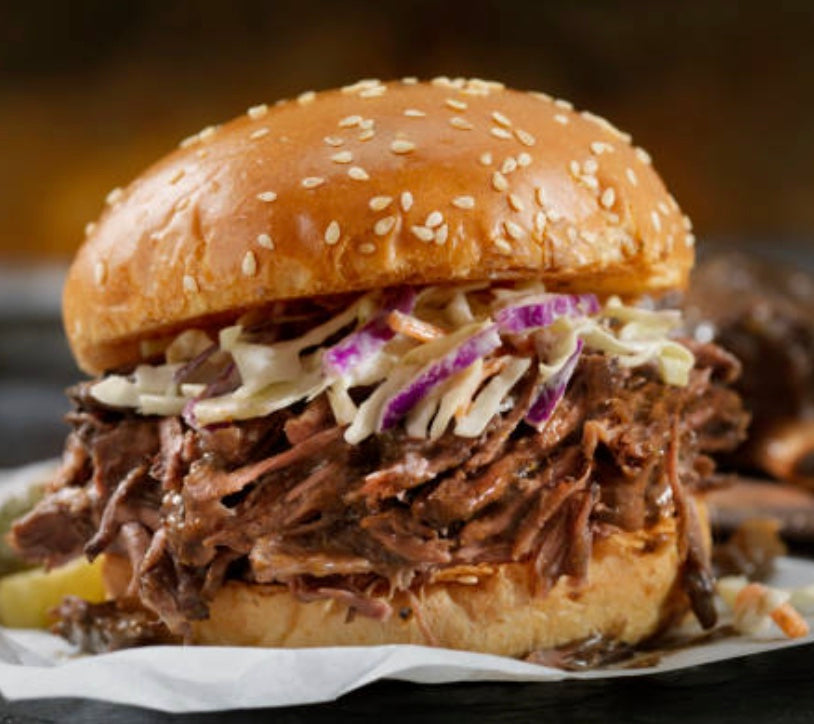When we think of American-style barbecue, smoky racks of ribs, pulled pork sandwiches piled high, and whole hog feasts immediately come to mind. But pork wasn’t always the centrepiece of the pit. Its rise to prominence in the American barbecue tradition tells a story that winds through colonial history, Southern agriculture, cultural exchange, and regional identity.
The Hog Arrives in the New World
Pigs were first introduced to the Americas by Spanish explorers in the 1500s. Unlike cattle, pigs thrived in the new environment—resilient foragers that could be left to roam and fend for themselves. By the 17th and 18th centuries, pigs were a staple of colonial farming and an inexpensive source of meat.
For enslaved Africans, who often received the less “desirable” cuts such as ribs and shoulders, pork became both a necessity and a canvas for ingenuity. Cooking low and slow over open pits with spice blends and vinegar-based sauces not only tenderised the meat but infused it with flavour that elevated humble cuts into something extraordinary.
The Southern Connection
As the American South developed, hog farming flourished. The climate and terrain were well-suited to raising pigs, and pork quickly became the dominant protein in Southern diets. Families often raised hogs for slaughter in the cooler months, turning every part of the animal into food—fresh roasts, smoked hams, sausages, cracklings, and lard for cooking.
Community gatherings grew around hog killings, where neighbours would come together to share in both the work and the feast. These traditions laid the foundation for what would become whole hog barbecue in the Carolinas, still considered by many purists the truest form of American BBQ.
Regional Flavours and Pork’s Reign
As barbecue culture spread, pork remained central, but regional styles gave it their own signature touch:
-
Eastern North Carolina: Whole hog over wood coals, finished with a sharp vinegar-and-chilli sauce.
-
Western North Carolina (Lexington-style): Pork shoulders with a tangy tomato-vinegar sauce.
-
Memphis: Pork ribs—both wet (sauced) and dry (rubbed)—became iconic, alongside piles of pulled pork.
-
Deep South: Pit-roasted pork paired with mustard, pepper, or molasses-based sauces.
The versatility of pork—its ability to absorb smoke, rubs, and sauces—cemented its role as the backbone of barbecue identity.
Barbecue as Culture, Not Just Cuisine
For many communities, barbecue was never just about feeding people; it was about bringing them together. Church picnics, political rallies, and family reunions were often centred around a hog cooked low and slow. Pork’s affordability made it accessible, and its flavour made it unforgettable.
The communal act of tending a pit all night, sharing stories, and feeding hundreds from one animal gave pork barbecue a cultural weight that still resonates today. It represents thrift and abundance, hardship and celebration, tradition and innovation—all wrapped up in smoke and flavour.
Today’s Pitmasters: Honouring and Evolving Tradition
Modern pitmasters continue to honour pork’s central role while pushing boundaries. From classic Carolina whole hog pits to Texas joints experimenting with heritage breeds, pork remains a canvas for creativity. Even as beef brisket has risen in popularity—particularly in Texas—pork retains its crown in many regions as the heart of American BBQ.
At The Feedlot, pork plays beautifully with our rubs and sauces—whether it’s a lemony Grasslands rub on pork skewers, the heat of Heatwave on ribs, or a smoky Trailblazer glaze over pulled pork. It’s a connection to history that we get to celebrate and reinvent with every cook.
Final Thoughts
Pork’s journey from colonial farms to barbecue pits across America tells the story of resilience, adaptation, and community. It’s a story of people making the most of what they had, transforming modest cuts into meals that defined gatherings and traditions. Today, every bite of pulled pork or smoked ribs carries with it centuries of heritage—proof that pork isn’t just a meat in American BBQ, it’s the soul of it.



